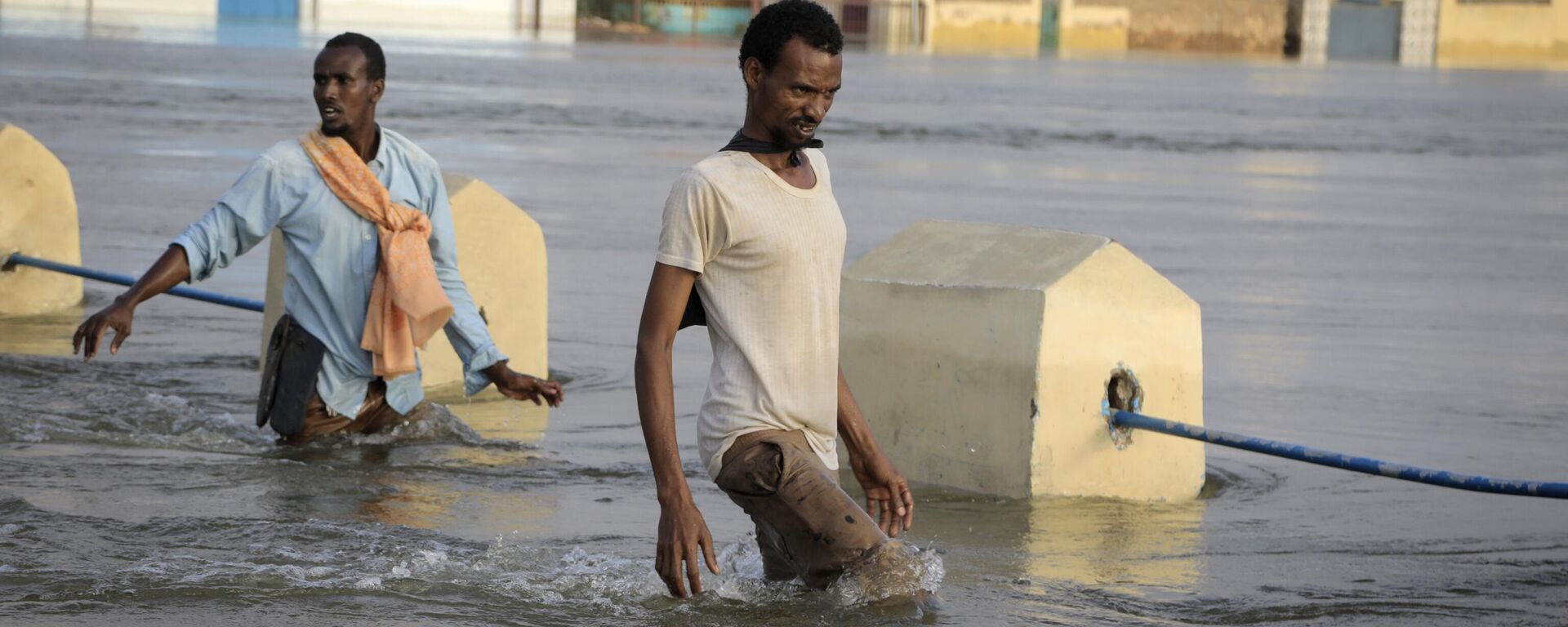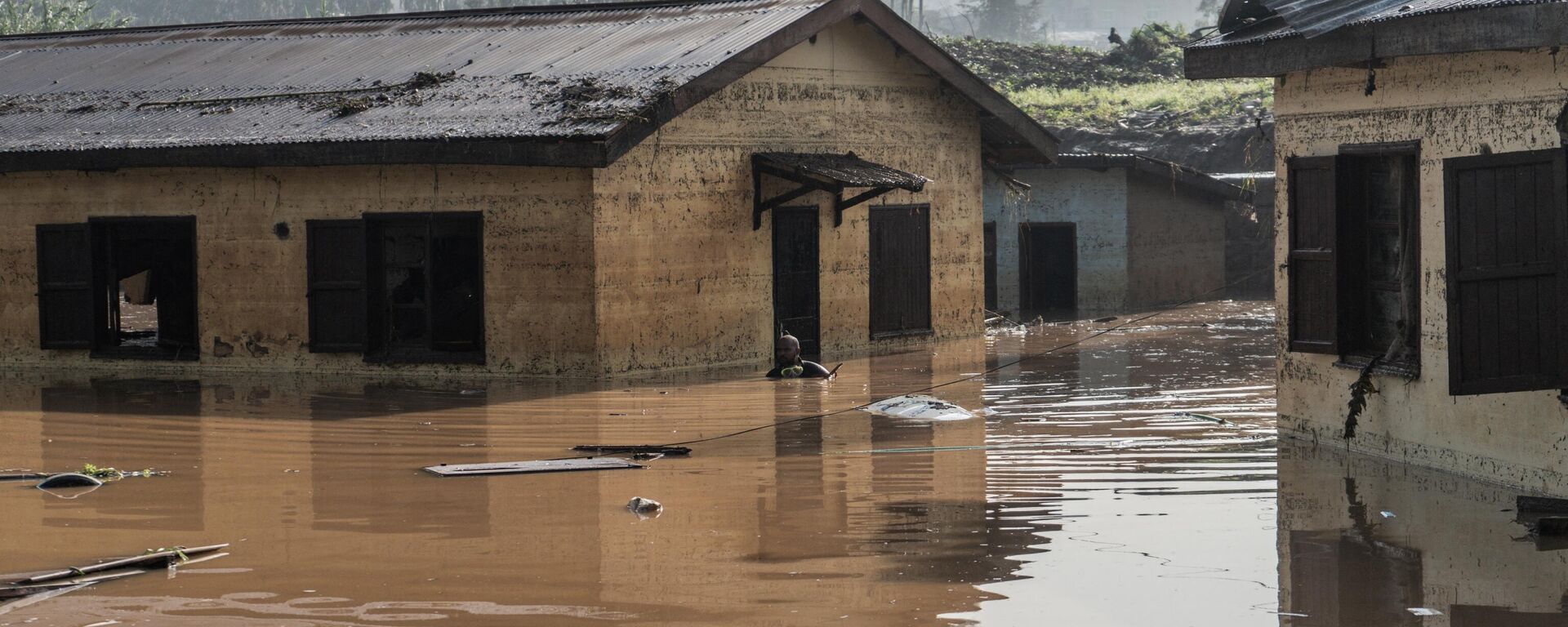https://en.sputniknews.africa/20231112/flooding-in-somalia-displaces-500000-people-information-minister-1063502211.html
Flooding in Somalia Displaces 500,000 People: Information Minister
Flooding in Somalia Displaces 500,000 People: Information Minister
Sputnik Africa
Heavy rains that triggered flash flooding in Somalia have caused around half a million people to flee their homes and killed more than 30 people, said the... 12.11.2023, Sputnik Africa
2023-11-12T16:58+0100
2023-11-12T16:58+0100
2023-11-12T16:58+0100
somalia
horn of africa
ocean
united nations humanitarian office (ocha)
united nations (un)
floods
nature
disaster
natural disaster
international
https://cdn1.img.sputniknews.africa/img/07e7/0b/0c/1063502471_0:160:3072:1888_1920x0_80_0_0_a37d56183781ec00aa5728ed2941254e.jpg
The Horn of Africa nation has been lashed by unrelenting downpours since the beginning of the month due to the El Nino weather phenomenon, inundating homes and farmland. The disaster comes on the heels of a record drought that has left millions of Somalis on the brink of famine. He said government officials had confirmed the deaths of 31 people but "it is possible that the toll could be higher". The bulk of destruction is in Gedo region in southern Somalia and central Hiran region where the seasonal Shabelle River broke its banks, submerged roads and washed away properties in Beledweyne town. Around 200,000 people were displaced from Beledweyne when the river overflowed in May. Somalia is considered one of the most vulnerable countries to climate change, but is particularly ill-equipped to cope with the crisis as it battles a deadly Islamist insurgency. The UN humanitarian agency, OCHA, last week said that the country was facing "once-in-a-century flooding" and warned that 1.6 million people could be affected. OCHA said the situation had been exacerbated by the combined impact of two climate phenomena, El Nino and the Indian Ocean Dipole -- a climate system defined by the difference in sea surface temperature between western and eastern areas of the ocean. El Nino is typically associated with increased heat worldwide, as well as drought in some parts of the world and heavy rains elsewhere. El Nino last occurred in 2018-2019 and was followed by an exceptionally long La Nina -- El Nino's cooling opposite -- which ended earlier this year. Between October 1997 and January 1998, devastating floods caused by El Nino led to more than 6,000 deaths in five countries in the Horn of Africa. At least 1,800 people died in Somalia, where the Juba River burst its banks. From October to November 2006, flooding caused by rains left more than 140 people dead in Somalia, with many drowned, but others killed by crocodiles or succumbing to a malaria epidemic. At the end of 2019, at least 265 people died and tens of thousands were displaced during two months of relentless rainfall in several countries in East Africa. The current El Nino rains has killed more than 15 people in Kenya and claimed the lives of more than 20 others in Ethiopia's Somali region.
https://en.sputniknews.africa/20231106/somalia-declares-state-of-emergency-due-to-deadly-flooding-un-1063363649.html
https://en.sputniknews.africa/20231104/floods-in-ethiopia-leave-more-than-20-dead-thousands-displaced-1063314629.html
somalia
horn of africa
ocean
east africa
Sputnik Africa
feedback@sputniknews.com
+74956456601
MIA „Rossiya Segodnya“
2023
Agence France Presse (AFP)
Agence France Presse (AFP)
News
en_EN
Sputnik Africa
feedback@sputniknews.com
+74956456601
MIA „Rossiya Segodnya“
Sputnik Africa
feedback@sputniknews.com
+74956456601
MIA „Rossiya Segodnya“
Agence France Presse (AFP)
somalia, horn of africa, ocean, united nations humanitarian office (ocha) , united nations (un), floods, nature, disaster, natural disaster, international, east africa
somalia, horn of africa, ocean, united nations humanitarian office (ocha) , united nations (un), floods, nature, disaster, natural disaster, international, east africa
Flooding in Somalia Displaces 500,000 People: Information Minister
Agence France Presse (AFP)
Heavy rains that triggered flash flooding in Somalia have caused around half a million people to flee their homes and killed more than 30 people, said the Information Minister Daud Aweis on Sunday.
The Horn of Africa nation has been lashed by unrelenting downpours since the beginning of the month due to the El Nino weather phenomenon, inundating homes and farmland.
The disaster comes on the heels of a record drought that has left millions of Somalis on the brink of famine.
"Half a million of people have fled from their houses due to the flooding," said the minister, warning that 1.2 million others could be affected.
He said government officials had confirmed the deaths of 31 people but "it is possible that the toll could be higher".
The bulk of destruction is in Gedo region in southern
Somalia and central Hiran region where the seasonal Shabelle River broke its banks, submerged roads and washed away properties in Beledweyne town.
Around 200,000 people were displaced from Beledweyne when the river overflowed in May.
Somalia is considered one of the most vulnerable countries to climate change, but is particularly ill-equipped to cope with the crisis as it battles a deadly Islamist insurgency.
The UN humanitarian agency, OCHA, last week said that the country was facing "once-in-a-century flooding" and warned that 1.6 million people could be affected.
OCHA said the situation had been exacerbated by the combined
impact of two climate phenomena, El Nino and the Indian Ocean Dipole -- a climate system defined by the difference in sea surface temperature between western and eastern areas of the ocean.
El Nino is typically associated with increased heat worldwide, as well as drought in some parts of the world and heavy rains elsewhere.
El Nino last occurred in 2018-2019 and was followed by an exceptionally long La Nina -- El Nino's cooling opposite -- which ended earlier this year.
Between October 1997 and January 1998, devastating floods caused by
El Nino led to more than 6,000 deaths in five countries in the Horn of Africa. At least 1,800 people died in Somalia, where the Juba River burst its banks.
From October to November 2006, flooding caused by rains left more than 140 people dead in Somalia, with many drowned, but others killed by crocodiles or succumbing to a malaria epidemic.
At the end of 2019, at least 265 people died and tens of thousands were displaced during two months of relentless rainfall in several countries in East Africa.
The current El Nino rains has killed more than 15 people in Kenya and claimed the lives of more than 20 others in Ethiopia's Somali region.



